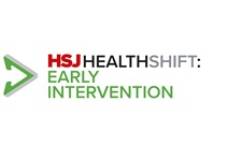Two conflicting views wove through the HSJ and IBM event on how information technology might help deliver the forthcoming 10-year NHS plan.
The first – and foremost – was the view that technology’s contribution would be significant and transformative. But underlying this enthusiasm was a scepticism that the NHS more generally shared this view, and – as a result – would move too slowly and cautiously to maximise the opportunity.
In association with

This dissonance was eloquently captured by government adviser Paul Corrigan – a veteran of 25 years of healthcare reform and one of those with his hand on the pen that will write the 10-year plan.
Mr Corrigan pointed out that the three shifts this government wants to achieve – moving from hospital to community care, from treatment to prevention, and from analogue to digital – had two things in common. The first was that they had also been the priorities of various governments for the last 20 years, and the second was that they had consistently failed to happen.
This set of reforms though, he said, was the service’s “last chance” before the “curve of doom” which portrays the rising cost of healthcare demonstrated that a near-universal, free at-the-point-of-need service would become unaffordable.
However, Mr Corrigan was upbeat about the chances of success – as he must be. Holding up his smartphone he declared that as a cancer survivor, he did not need a “hospital at home” – as the latest NHS parlance would have it – because he had a “hospital in his hand”.
The vehicle for delivery of this idea, he suggested, was the NHS App which Mr Corrigan depicted as central to the digital transformation of the NHS and which – crucially – must be interoperable with any other technology used by the service.
Earlier in the day, the event had heard from Joe Harrison, the chief executive of Milton Keynes University Hospital Foundation Trust and NHS England’s director of digital channels.
Speaking alongside NHSE’s director of product and platforms Helen Clifton, Mr Harrison described how the pandemic had transformed public awareness of the app and created a direct connection between the NHS and the people it served that far surpassed anything that had gone before.
The challenge now, he said, was to transform high download and registration rates into greater interaction. For example, the number of appointments being managed through the app was surging – but still only represented around 3 per cent of the total.
The Milton Keynes CEO said this reflected the confused nature of primary care access – and that work was underway to better understand how requests for routine appointments might be separated from urgent ones. Once this was done, he was confident the app would become the primary route for the former.
Mr Harrison pointed out that, even now, using the app to access NHS 111 services provides a faster and more effective route than phoning.
Mr Corrigan also stressed the need for the NHS to think in terms of platforms rather than products, and the Federated Data Platform received its due during the event’s opening panel.
During this session, NHSE head of data and analytics Ming Tang revealed the FDP was being used to train a range of AI tools, including a specific clinical one.
The theme of AI’s potential continued throughout the event. There was broad agreement that it offered a range of opportunities to make support and back office services more efficient – but a weaker consensus on its long-term implications and its use in patient care.
Reflecting on the event, Angela Spatharou, IBM healthcare and life sciences leader, UKI/EMEA, said: “The conference highlighted a deep and lasting change in attitude to digital transformation in the NHS.
“Building on insights shared by our fantastic speakers, the most important voice in the room was that of people striving to deliver better care, rather than just successful technology projects – but excited and committed to use technology, data and analytics to do so.”



























3 Readers' comments